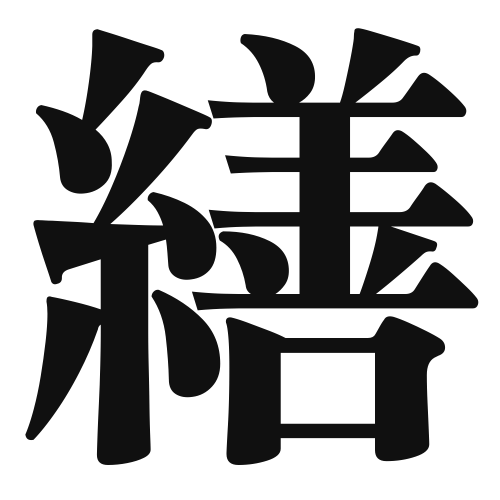1. Overview of Meaning
The kanji “繕” (pronounced “zen”) generally means “to mend” or “to repair.” It is often used in the context of fixing something that is damaged or worn out, particularly in textiles or clothing.
2. Formation and Radical
Formation of the Kanji: The kanji “繕” is a compound character (会意文字) that combines elements representing “to weave” (織) and “to arrange” (善). This reflects the idea of carefully mending or arranging something.
Radical: The radical of “繕” is “糸” (ito), which means “thread” or “string.” This radical is commonly found in kanji related to textiles and sewing.
3. Examples of Usage
Common Words and Phrases: Some frequently used words that include “繕” are:
- 繕う (zenau) – to mend or repair
- 繕い (zenrai) – mending or repair work
Example Sentences in Daily Conversation:
- この服を繕ってもらえますか? (Kono fuku o zenatte moraemasu ka?) – Can you mend this clothing for me?
- 彼は古い本を繕うのが得意です。 (Kare wa furui hon o zenau no ga tokui desu.) – He is good at mending old books.
4. Synonyms and Antonyms
Similar Kanji: A similar kanji is “修” (shuu), which means “to repair” or “to fix,” but it often implies a more formal or thorough process, such as repairing a system or improving skills.
Opposite Kanji: An antonym is “壊” (kowasu), which means “to break” or “to destroy.” This represents the opposite action of mending or repairing.
5. Cultural and Historical Background
Relation to Japanese Culture: The concept of mending is significant in Japanese culture, often associated with the philosophy of taking care of belongings and valuing them. This is reflected in practices like “kintsugi,” where broken pottery is repaired with gold, highlighting the beauty in imperfections.
Proverbs and Idioms: One relevant proverb is “壊れたものを繕う” (kowareta mono o zenau), which translates to “to mend what is broken,” emphasizing the importance of restoration and care in both physical and emotional contexts.
